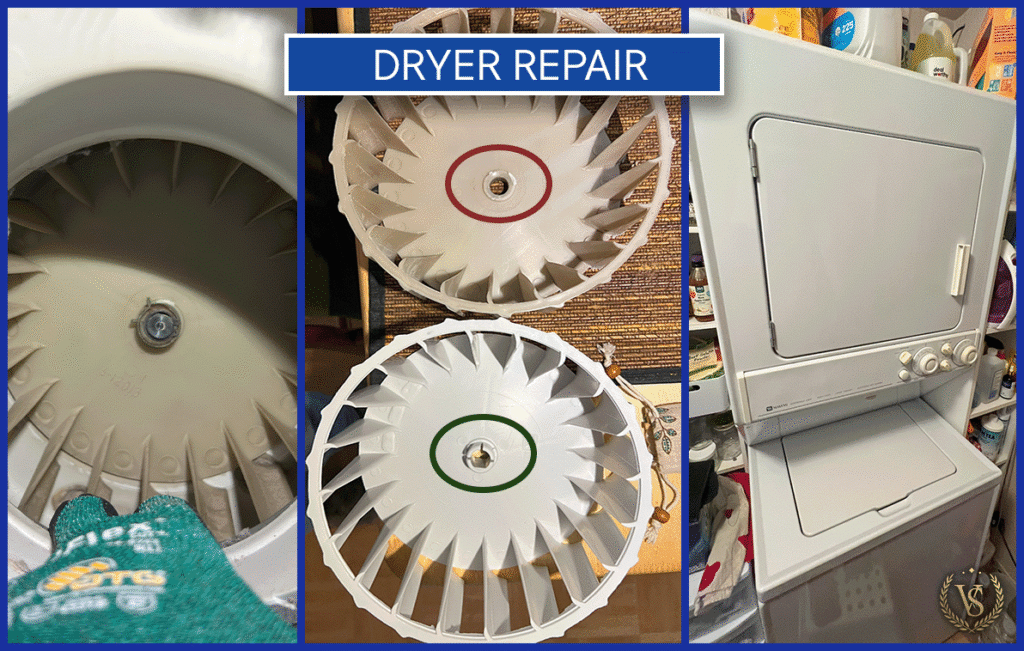
Maytag Dryer – Loud Noise
Got a call where our customer reported a loud, unusual noise coming from their 25-year-old Maytag dryer during operation. After inspection, we found that the blower wheel was worn out – years of heating cycles degraded the plastic retaining ring (circled in red), causing the noise.
Replaced it with a brand new blower wheel, restoring smooth, quiet operation.
Result: This well-built dryer will provide many more years of reliable service – with a $30 part!
Why Repair? Quality appliances like this Maytag are worth maintaining—saving you money and keeping great machines out of landfills.
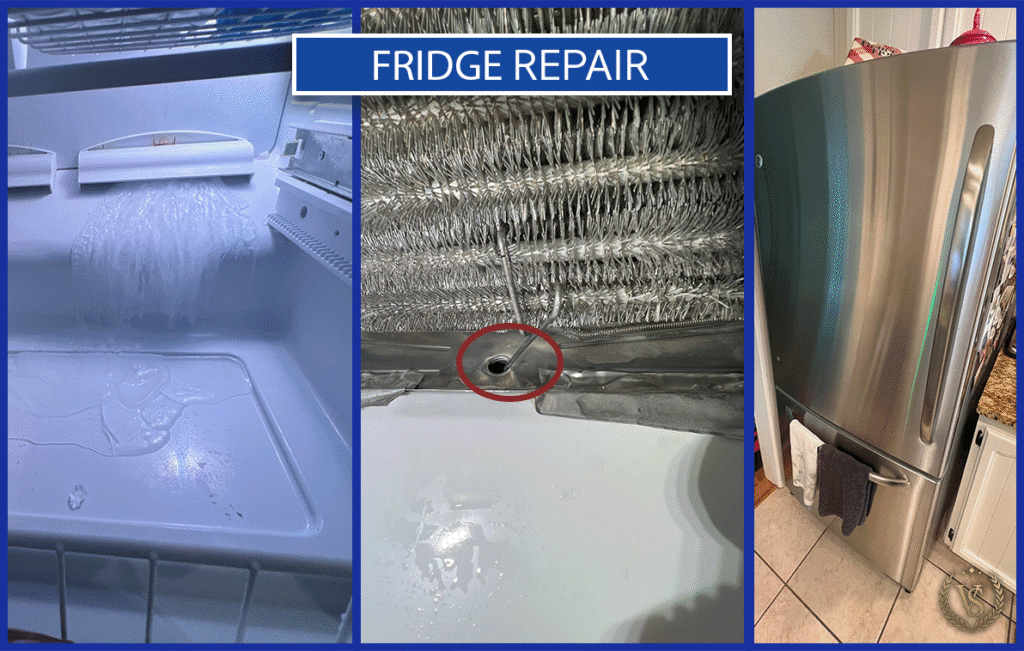
GE Refrigerator – Excessive Ice Buildup
Customer reported heavy ice accumulation in their freezer—a common issue often caused by a clogged drain line. Inspection required the removal of the freezer door, baskets, and evaporator cover to access the drain.
Found the defrost coil’s plastic wrapping had degraded, breaking off and blocking the drain hole. Cleared the obstruction, restoring proper drainage during defrost cycles. Result: No more ice buildup!
Pro Tip: Regular maintenance, including drain line cleaning, can prevent future clogs and keep your fridge running smoothly.
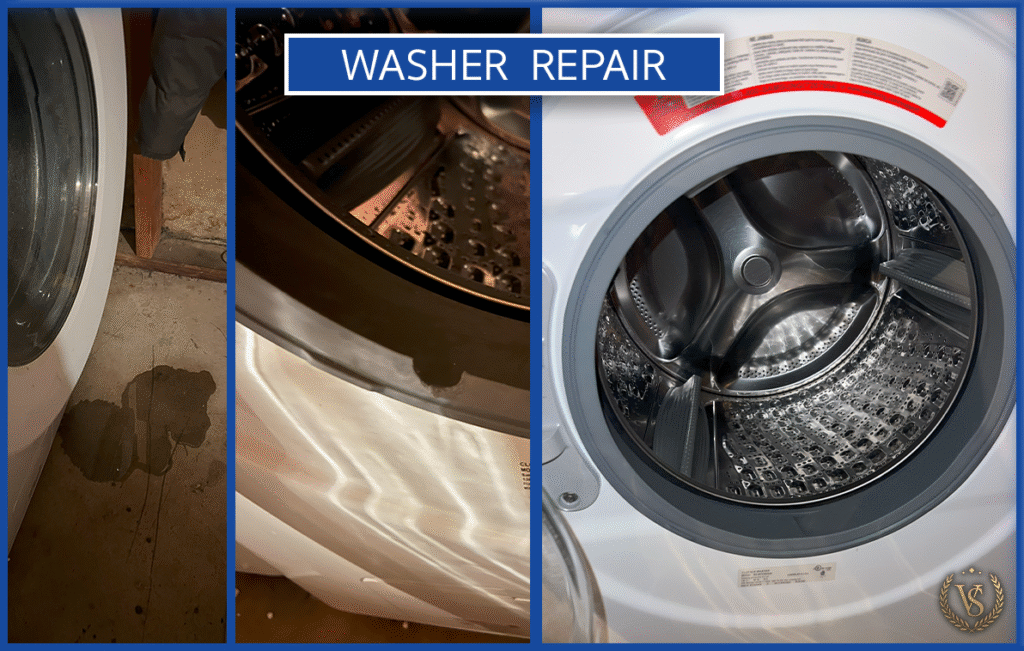
Samsung Washer – Leaking Water
For this job the customer reported a leaking washer, and the issue was quickly traced to a torn door gasket (also called a boot seal).
Replacing it required removing the front panel for full access to the drum—a time consuming process, but worth the effort! We installed a new, high-quality gasket to ensure a watertight seal, putting an end to leaks for good.
Pro Tip: If you are new to the front-load style washer, please make sure to get in the habit of leaving the door open after completing each wash cycle. Small but necessary habit to keep your machine odor-free.
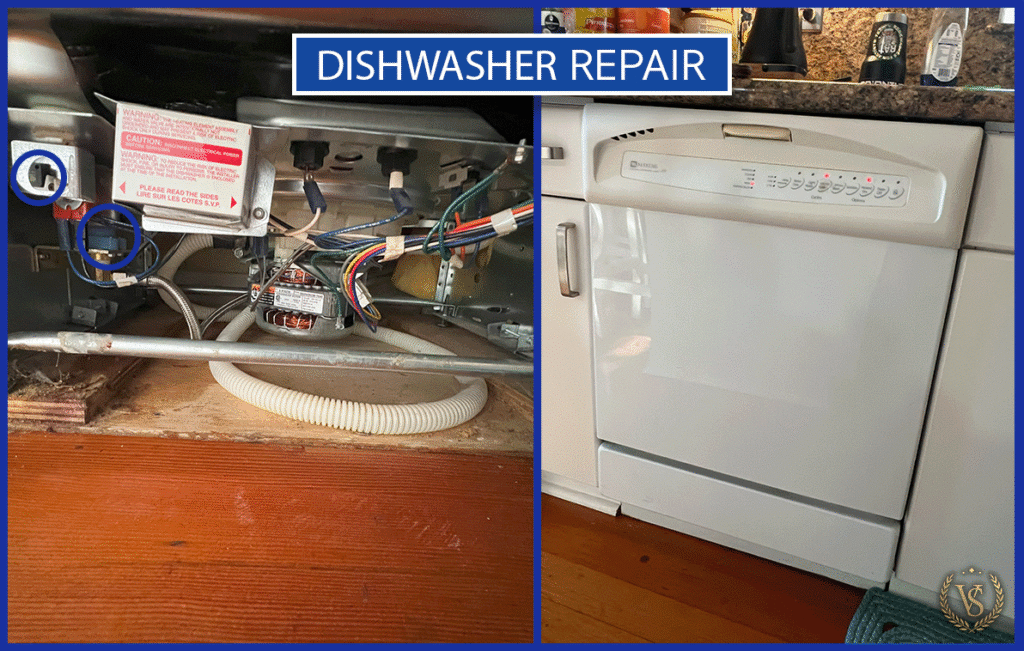
Maytag Dishwasher – Not Filling
For this repair the customer reported their dishwasher was running and draining properly but not filling with water—an uncommon but fixable issue.
After some testing – our diagnosis revealed two faulty components, after replacing both parts, the dishwasher was fully restored to normal operation. Once again, saving an appliance from the landfill for a fraction of the cost of a new one.
Why Repair? We get it – sometimes it’s tempting to just replace the appliance rather than getting it fixed. However, repairs can be affordable – don’t hesitate to reach out to get an estimate of what a repair would cost – it’s FREE to ask.
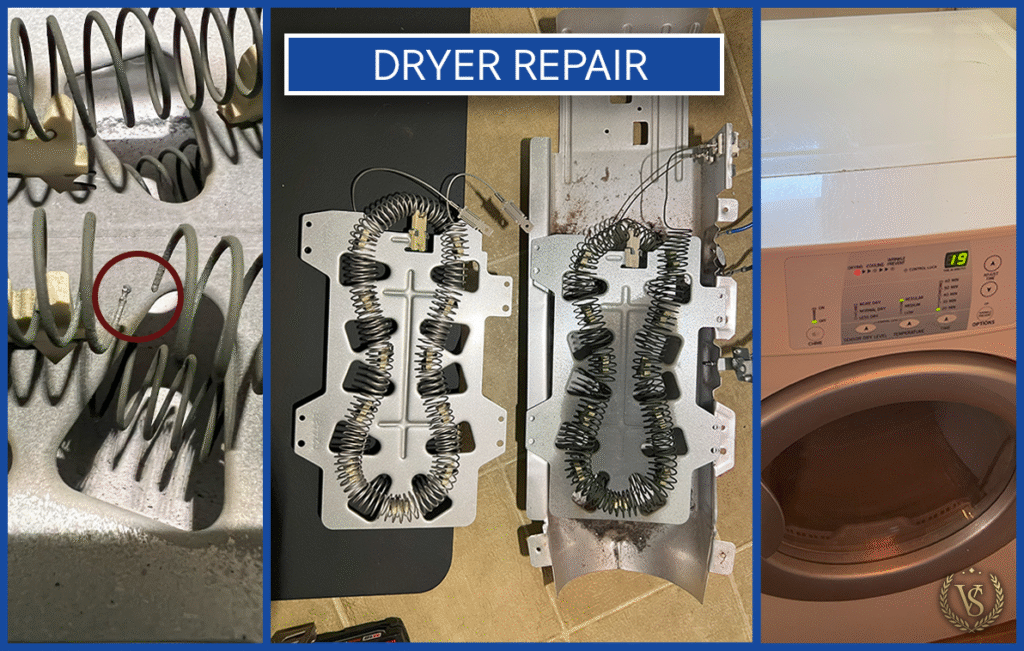
Amana Dryer – No Heat
Customer called saying that their dryer wasn’t producing heat—a common issue with several possible causes. After disassembling the unit and testing key components, we identified a broken heating element (visible in the red circle on the left image).
Replacing the faulty element restored proper heating, ensuring no more damp laundry for the customer!
Bonus: During disassembly – we were able to vacuum up all the years of built-up lint inside and behind the dryer – improving performance and safety.
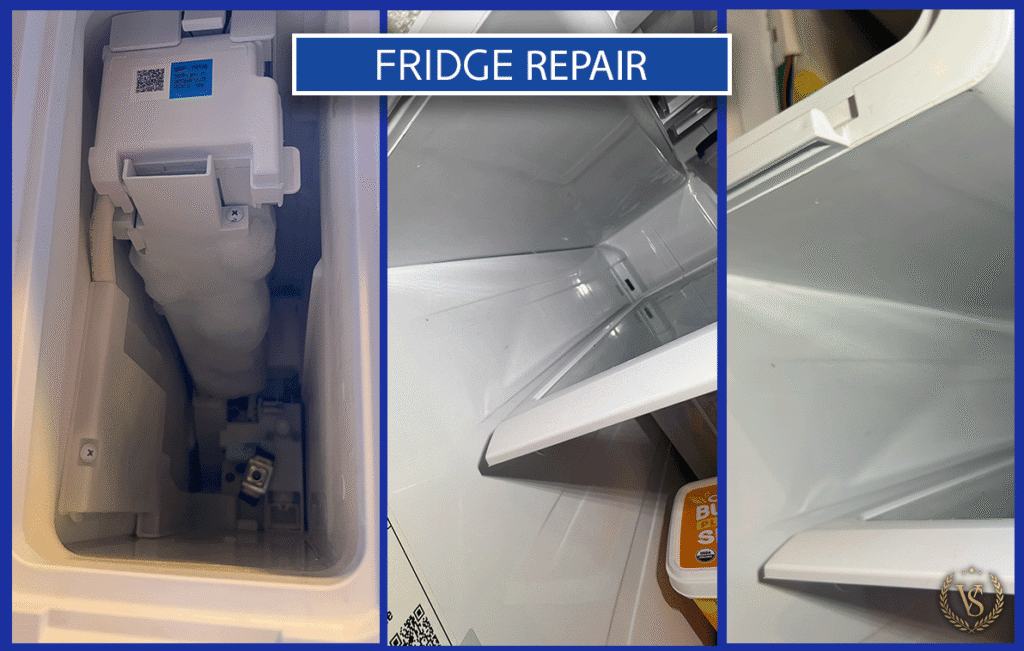
Samsung Refrigerator – Icemaker Repair
One of our customers experienced the all-too-common Samsung refrigerator issue: ice accumulation on the icemaker. These units are notorious for problems.
In this case all components were functional – no typical part failures found. The issue was in the poorly sealed housing allowing water vapor to escape and freeze on the cold surfaces.
Repair required complete disassembly and resealing with: cold-rated waterproof sealant.
Result: The resealed unit now maintains proper moisture levels, preventing future ice buildup.
Why This Matters: Many technicians may overlook this solution, leading to unnecessary part replacements.
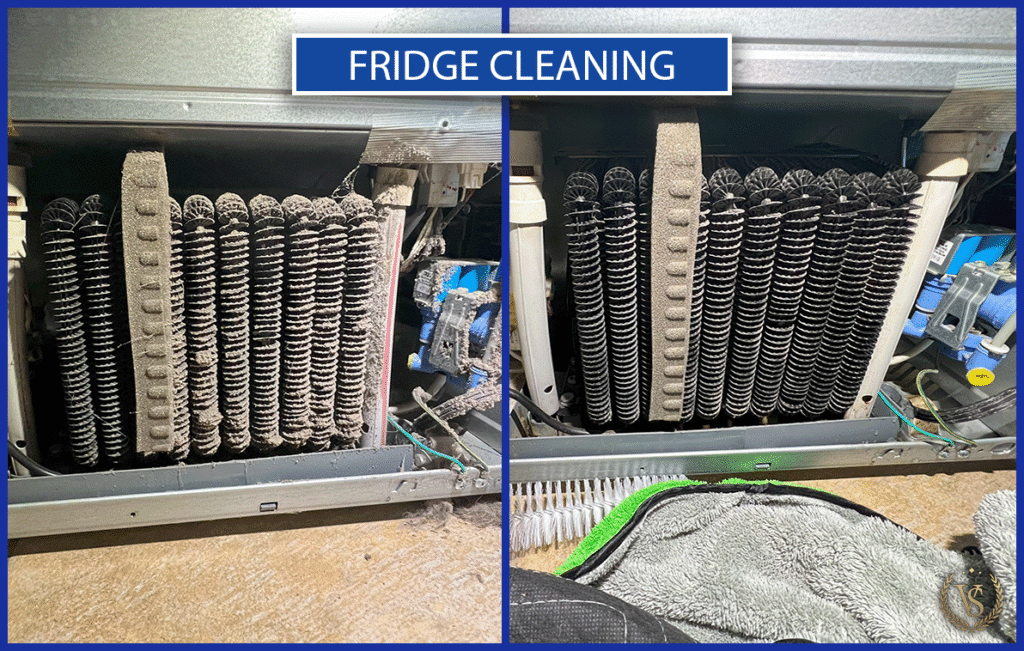
Samsung Fridge – Coil Cleaning
This customer reached out to schedule a cleaning service for their refrigerator. Just like your car needs regular oil changes, your appliances requires maintenances too.
1. Dust-covered coils can’t properly release heat, forcing your fridge to work harder (increased wear on components)
2. It requires the use of more electricity (higher energy bills)
3. Your fridge may struggle to maintain temperature as easily (reduced cooling performance)
Most manufacturers recommend at least a yearly cleaning.
DIY Warning: If attempting yourself, always unplug the unit first. Use only a soft brush or vacuum attachment and make sure to never bend or puncture coils (refrigerant leaks are dangerous and costly to repair).